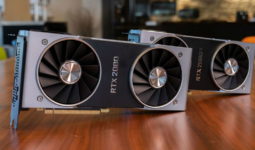Intel’s December Event Could Reveal More Details on Discrete GPU
Back at the at the Siggraph 2018 show, Intel teased a new dedicated graphics card, but another event is also coming soon. DigiTimes is reporting that Intel is hosting a new conference in December, timed right before CES 2019.
We reached out to Intel for clarification and it confirmed that the event is an architecture day. Intel did not otherwise confirm discrete graphics for this event, but DigiTimes writes that the conference is all about progress on Intel’s latest technologies. That supposedly includes discussions on Arctic Sound, the code name for Intel’s discrete GPU, as well as the other units of Intel businesses.
From what was revealed at Siggraph 2018, Intel’s new dedicated graphics card will be coming in 2020 to “set graphics free.” That would be the first dedicated graphics card from Intel in more than 20 years, coming after i740 GPU in 1998. It also would place Intel alongside both Nvidia and AMD, which have dominated the graphics card and gaming market in all these years.
Intel might be better known for its integrated graphics, which aren’t known for power. Recently, the company has taken steps in recent times to try and resolve that deficiency. It previously pegged former AMD Radeon graphics chip designer Raja Koduri as its new chief architect and senior vice president of the new Core and Visual Computing Group. Though still unverified, DigiTimes also reports that Intel has opened a new GPU R&D center in Canada and has plans for another in India. If it is true, one can assume that is where these new dedicated graphics cards could likely be under development. Those are all just rumors at this point, but certainly interesting ones.
The sizzle reel and fancy silhouette of the upcoming dedicated graphics card seen at Siggraph 2018 also show that Intel has put a lot of effort into designing and marketing its products. Still, given that this upcoming conference is being dubbed as architecture day, the scope in this event could likely be limited, and technical details on chipsets would not be made clear. It could also just be a way to create media buzz or share more on how Intel’s microarchitecture is doing as a whole.




